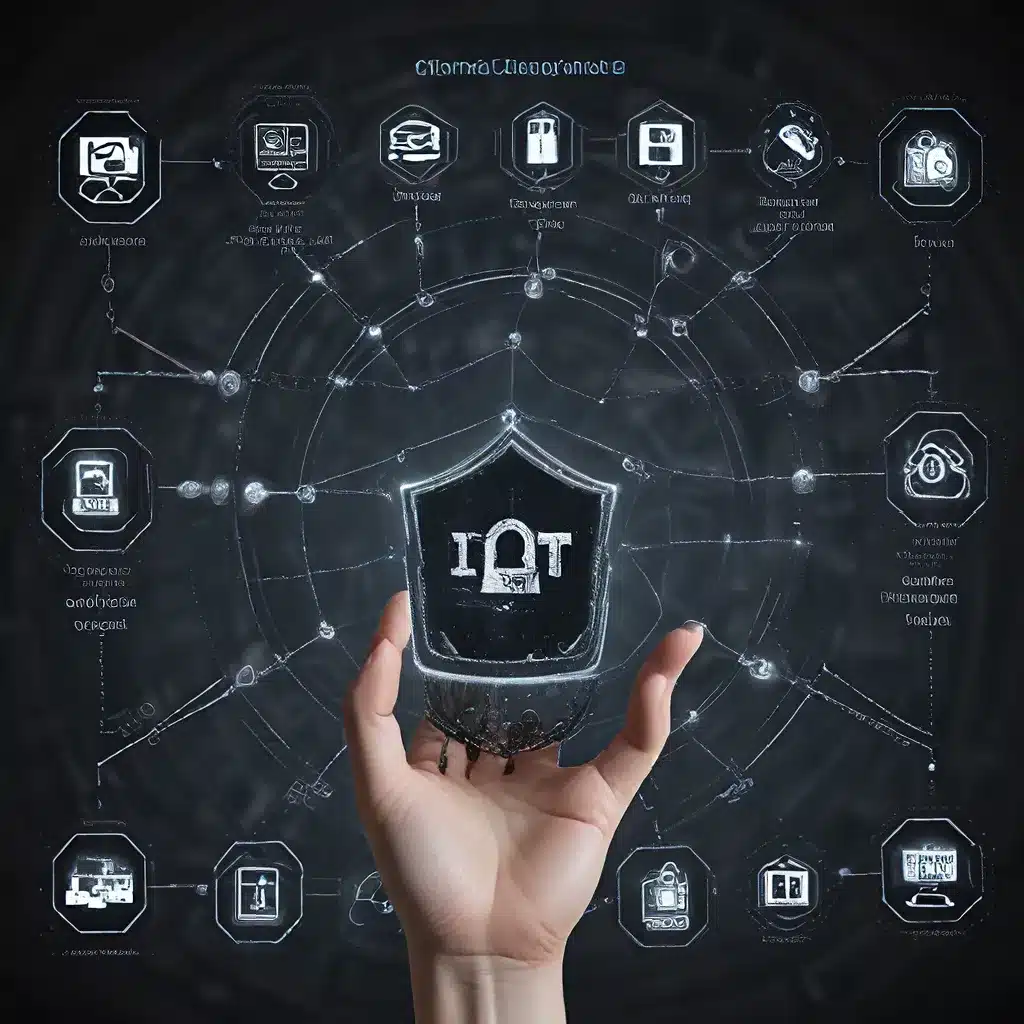
The Rise of Sensor Networks and IoT
The Internet of Things (IoT) has been transforming various industries by enabling the seamless integration of physical devices with digital systems. At the heart of this revolution are sensor networks, which collect and transmit vast amounts of data, powering a wide range of IoT applications. From smart homes and cities to industrial automation and environmental monitoring, sensor networks have become the backbone of the IoT ecosystem.
However, as the number of connected devices and the volume of data generated continue to grow exponentially, the security challenges faced by these sensor-driven IoT systems have become increasingly critical. Cybercriminals have recognized the vulnerabilities inherent in these interconnected systems, leading to a surge in cyberattacks targeting IoT infrastructure.
To address these pressing security concerns, researchers and industry leaders have been exploring innovative cybersecurity strategies and advancements in the field of sensor network design and IoT security. This article will delve into the latest developments, highlighting key security challenges, emerging technologies, and best practices for securing sensor-driven IoT systems.
Security Challenges in Sensor-Driven IoT Systems
Sensor networks and IoT devices face a unique set of security challenges due to their distributed nature, limited computational resources, and the diverse range of communication protocols involved. Some of the most pressing security concerns include:
-
Device Vulnerabilities: IoT devices, often designed with limited processing power and memory, can be susceptible to hardware-based attacks, software vulnerabilities, and weak authentication mechanisms.
-
Network-level Threats: The interconnected nature of sensor networks and IoT systems makes them vulnerable to network-based attacks, such as distributed denial-of-service (DDoS), man-in-the-middle (MITM), and eavesdropping.
-
Data Privacy and Integrity: The vast amount of sensitive data collected and transmitted by sensor networks raises concerns about data privacy and integrity, especially in the context of critical infrastructure and personal information.
-
Resource Constraints: The limited power and computational resources of IoT devices can make it challenging to implement robust security measures, such as advanced encryption and authentication algorithms.
-
Heterogeneous Ecosystem: The diverse range of IoT devices and communication protocols involved in sensor networks can create interoperability challenges and make it difficult to implement unified security strategies.
To address these security challenges, researchers and industry professionals have been exploring various cybersecurity strategies and technological advancements in the field of sensor network design and IoT security.
Emerging Cybersecurity Strategies for Sensor-Driven IoT
- Lightweight Cryptography: To overcome the resource constraints of IoT devices, researchers have developed lightweight cryptographic algorithms and hardware-based security solutions that can be implemented on low-power and resource-constrained sensor nodes.
Lightweight cryptography techniques, such as block ciphers, stream ciphers, and hash functions, have been designed to minimize memory and computation requirements while maintaining a high level of security.
- Secure Device Onboarding and Authentication: To address the device vulnerability challenge, researchers have proposed secure device onboarding and authentication mechanisms that can be seamlessly integrated into the IoT ecosystem.
These techniques leverage certificate-based authentication, physical unclonable functions (PUFs), and biometric-based identification to ensure the integrity of IoT devices and prevent unauthorized access.
- Distributed Ledger Technologies (DLTs) for IoT Security: The decentralized and tamper-resistant nature of distributed ledger technologies (DLTs), such as blockchain, has made them a promising solution for securing sensor-driven IoT systems.
DLTs can be used to establish secure communication channels, manage device identities, and record data transactions, thereby enhancing the overall security and transparency of IoT networks.
- Secure Edge Computing and Fog Architectures: To address the network-level threats and data privacy concerns, researchers have explored the use of edge computing and fog architectures in sensor-driven IoT systems.
These approaches move data processing and storage closer to the edge devices, reducing the attack surface and latency while improving data privacy and integrity.
- AI-Driven Anomaly Detection and Response: The integration of artificial intelligence (AI) and machine learning (ML) techniques has enabled the development of advanced anomaly detection and incident response systems for sensor-driven IoT networks.
These AI-driven solutions can identify and mitigate network-based attacks, device compromises, and data integrity issues in real-time, enhancing the overall resilience of IoT systems.
- Regulatory Frameworks and Industry Standards: To address the heterogeneous ecosystem challenge and ensure consistent security practices, governments and industry organizations have been developing regulatory frameworks and industry standards for IoT security.
These frameworks and standards provide guidelines and best practices for device manufacturers, service providers, and end-users to improve the security of sensor-driven IoT systems.
Transforming IoT Security through Collaborative Efforts
The security of sensor-driven IoT systems is a collaborative effort involving researchers, industry leaders, government agencies, and end-users. By leveraging the latest advancements in cybersecurity technologies, industry standards, and regulatory initiatives, the IoT ecosystem can enhance the overall security and resilience of these interconnected systems.
As the IoT landscape continues to evolve, it is crucial for stakeholders to stay informed about the latest security challenges and best practices to protect sensor networks and the valuable data they generate. By embracing these innovative cybersecurity strategies, the IoT industry can unlock the full potential of sensor-driven technologies while safeguarding critical infrastructure, personal information, and industrial operations.
To learn more about the latest developments in sensor network design and IoT security, explore the resources available on sensor-networks.org, a leading hub for information and insights on these transformative technologies.